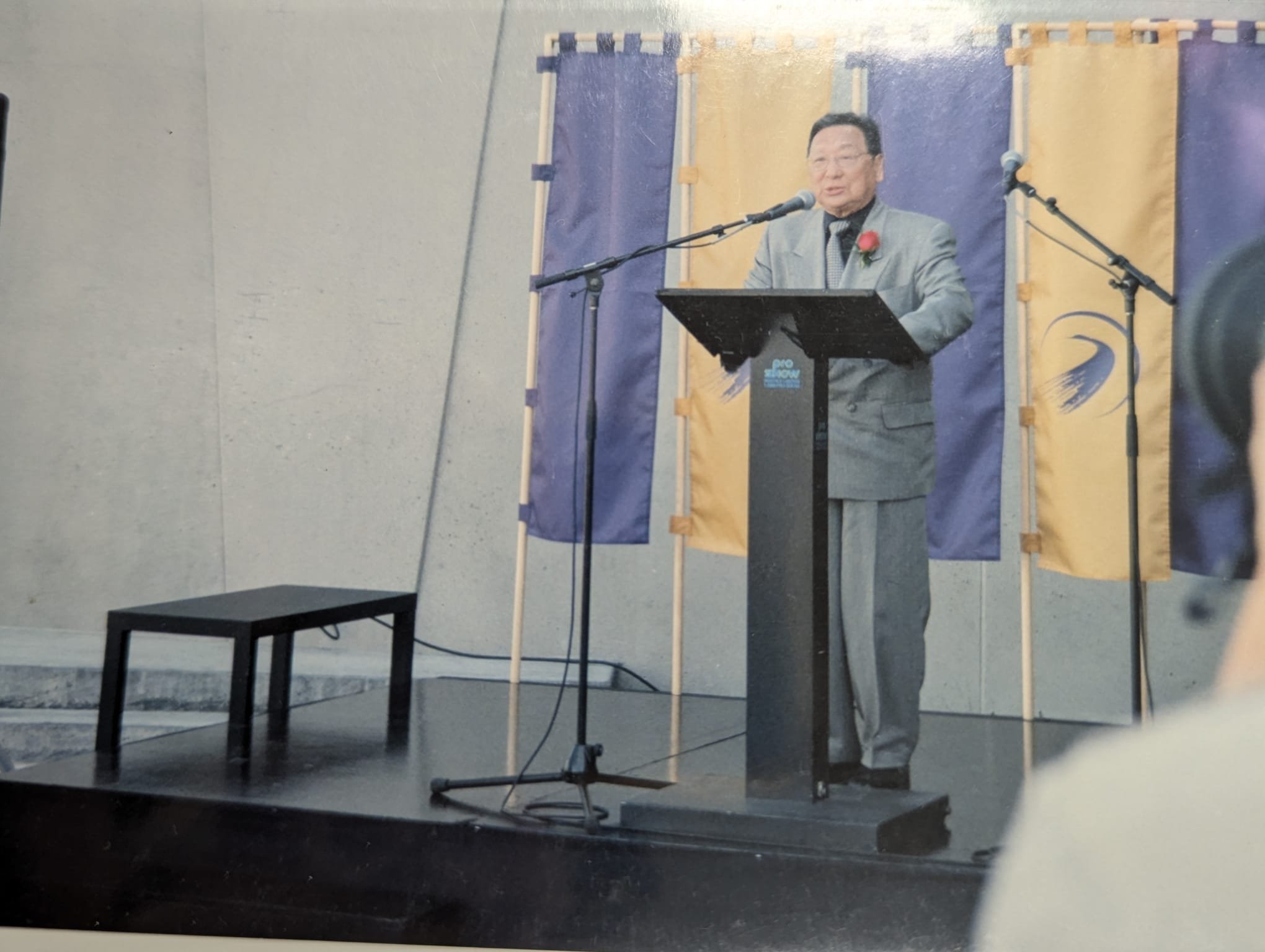What is Nikkei Place?
Nikkei Place is a campus of three non-profit organizations working collectively for the good of our local, national, and international Canadian and “Nikkei” (Japanese ancestry) communities:
Together, our mandates support children, new immigrants, and seniors with engaging programs, activities, events and services.
—
We respectfully acknowledge that Nikkei Place is located on the traditional, unceded territories of the Coast Salish peoples, including the xʷməθkʷəy̓əm (Musqueam), Sḵwx̱wú7mesh Úxwumixw (Squamish), and Sel̓íl̓witulh (Tsleil-Waututh) Nations.
Let’s Ask And Learn With Nikkei Place AI
How To Use
Step 1 Tap Ask To AI Button
Step 2 Log- in To Chat GPT Account
Step 3 Ask About Nikkei And Let’s Learn
This AI is specifically designed for Nikkei Place and contains a wealth of historical documents and information. It evolves and improves through your questions and search history.
"Together, We Preserve Our History and Inspire the Future."
The history of how the entire Nikkei community came together.
The story of Nikkei Place
The story of Nikkei Place is one of perseverance, cultural pride, and a commitment to community well-being. It represents the culmination of efforts by Japanese Canadians to preserve their heritage, provide support for their seniors, and create a hub for cultural, historical, and social activities. Here’s an overview of its origins, growth, and impact.
Origins and Early Vision
The seeds for Nikkei Place were planted in the early 1970s when members of the Japanese Canadian community, including notable figures like Nobby Fujisawa and architect Kenneth Takeuchi, began exploring the idea of a seniors' home to support the aging Japanese Canadian population. Initial research included community surveys and site visits to existing senior housing facilities like Nipponia Home in Ontario.
The first tangible project from this effort was the creation of Sakura-so on Powell Street in Vancouver. This facility was designed to provide small, affordable, independent living units for elderly Japanese Canadians. However, the goal was more ambitious—a broader "community centre" that would serve cultural, historical, and social needs. This idea later evolved into what would become Nikkei Place.
Development and Growth
In the 1980s and 1990s, the vision expanded. Discussions were held to establish a comprehensive cultural centre that would incorporate senior housing, cultural education, and community programming. This era also saw the rise of advocacy for redress for the injustices Japanese Canadians suffered during Second World War , a struggle that would shape the vision and purpose of Nikkei Place. The stories of internment, displacement, and eventual redress were core to the development of the National Nikkei Heritage Centre, which later became part of Nikkei Place.
The project culminated in the construction of New Sakura-so, an independent, affordable residence for seniors, which opened in 1998, followed by the Robert Nimi Nikkei Home in 2002, an assisted-living facility. This development marked the beginning of an "Aging in Place" philosophy, allowing seniors to remain within their community as they aged. The grand opening of the National Nikkei Heritage Centre occurred in 2000, formally establishing the comprehensive hub that today is Nikkei Place.
Structure and Components
Nikkei Place is a 3-acre site in Burnaby, British Columbia, housing multiple facilities and programs, including:
Nikkei Place Foundation:
New Sakura-so: Affordable, independent-living residences for seniors.
Robert Nimi Nikkei Home: Assisted living apartments, culturally sensitive to Japanese-Canadian seniors.
Nikkei National Museum: A professionally managed archive and exhibition space, showcasing the history, art, and heritage of Japanese Canadians.
Nikkei Cultural Centre: A space for cultural, language, and artistic education, as well as community events.
Gladstone Japanese Language School: Offers Japanese language education for all ages.
Suzuya Japanese Grocery: Provides authentic Japanese food and shopping experiences.
Nikkei Garden: A serene, beautiful space for reflection, community events, and even wedding photography.
Unification of Organizations
Previously, there were multiple organizations with overlapping purposes the National Nikkei Heritage Centre Society (NNHCS) and the Japanese Canadian National Museum (JCNM). In 2002, these two organizations merged to create the National Nikkei Museum & Heritage Centre. The merger aimed to streamline their missions, share resources, and enhance the museum's ability to serve as a national focal point for Japanese Canadian history, culture, and heritage.
Symbolism and Purpose
Nikkei Place symbolizes resilience, hope, and cultural pride. It embodies the idea that, even in the face of historical injustice and hardship, a community can rebuild, thrive, and offer a beacon of hope for future generations. Its purpose is to honor the past, celebrate the present, and shape the future. The site serves as a home for seniors, a cultural education hub, and a living testament to Japanese Canadian heritage.
Historical Struggles: From Shikataganai to Resilience
The history of Nikkei Place is deeply connected to the challenges faced by Japanese Canadians after Second World War. During the war, they were uprooted from their homes, stripped of their assets, and sent to internment camps, road camps, and sugar beet fields. The phrase "Shikataganai" ("It cannot be helped") reflected a deep sense of resignation.
But this attitude began to shift with the formation of organizations like the Japanese National Canadian Citizens Association (JNCCA) in 1949 and the later Redress Committee, which sought acknowledgment and compensation for these injustices. Their efforts culminated in the landmark redress settlement of 1988, paving the way for initiatives like Nikkei Place.
Impact
Over the years, Nikkei Place has become a vibrant, multigenerational community. It has housed over 230 seniors, provided education for thousands of students, and hosted numerous community events, festivals, and exhibitions. It also serves as a national resource for Japanese Canadian historical preservation, featuring an archive and museum of professionally managed collections. Through exhibitions and outreach, Nikkei Place's influence extends beyond British Columbia, with exhibitions that travel across Canada.
-----
-----
““Honoring the Past, Embracing the Present, Empowering the Future.””
-----
-----
Nikkei Place Gallery
We gratefully acknowledge support from the Community Fund of the Japanese Canadian Legacies Society.





































